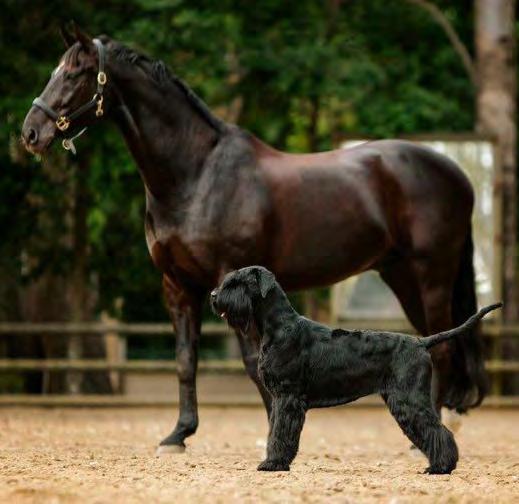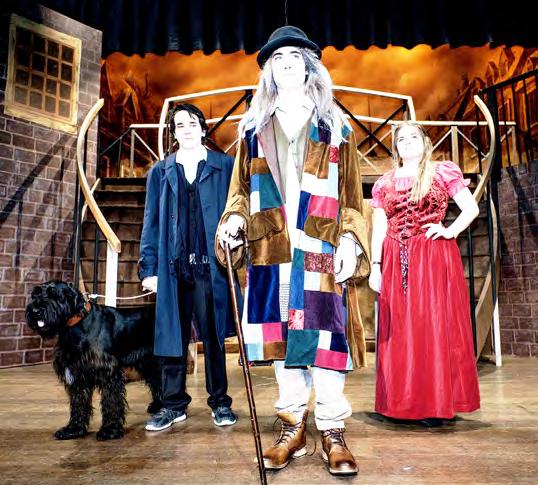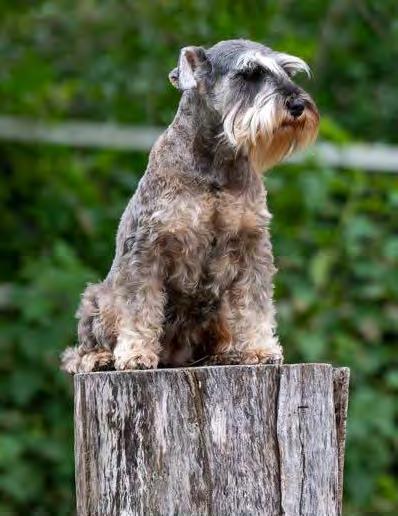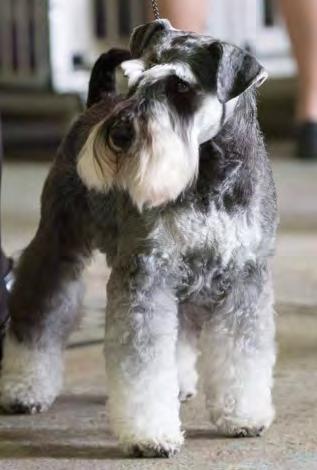
7 minute read
Annual General Meeting Of Members Notice
Notice Issued Via Email On 26th February 2021 Annual General Meeting of Members
PROCEDURE AT THE UPCOMING AGM
Members are asked to note the following AGM notice with some explanatory notes below to assist. • The meeting will be held via Zoom to enable access to all Members and more details will be released next week • In regards to the Board of Directors reports and annual financial reports, these are to be received by the Meeting only, though we have normally approved these as well, there is no need to approve the Board of Directors reports nor the audited accounts, there was perhaps some misunderstandings in that regard • All submitted questions are to be relevant to the Board of Directors reports and annual financial reports and submitted as per notice below, no questions will be taken from the floor
Annual General Meeting of Members
NOTICE is hereby given that the ANNUAL GENERAL MEETING OF MEMBERS of the Canine Control Council (Queensland) Limited will be held at the Dogs Queensland Sports Grounds, 247 King Avenue, Durack at 7:00pm on Wednesday 31 March 2021. All Members have a right to appoint a proxy under Clauses 55 - 59 of the CCC(Q) Ltd Constitution. Business to be conducted: • Receiving the report of the Board of Directors for the previous year • Receiving the annual financial accounts duly certified by the Auditor • The appointment of the Auditor for the next Financial Year • Declaration of the results of any election of members of the Board • Confirmation of CCC(Q) Ltd Income Tax and Capital Gains Tax exemption status • Any other item of business submitted in writing by a member to the Secretary not less than fourteen (14) days prior to the date fixed for the AGM. In accordance with Clause 46.1(5) of the CCC(Q) Ltd Constitution, Members are asked to submit any additional items of business to the CCC(Q) Ltd Office no later than close of business on 17 March 2021. Note 1: All Financial Members are entitled to attend the AGM, vote at the AGM and submit Items of Business for the AGM. Any renewing Members from 2020 who are yet to pay their 2021 Renewal Fees may only attend the AGM but may not vote at the AGM unless their 2021 Renewal Fees are paid prior to the AGM. Note 2: All Financial Members unable to attend have the right to appoint a proxy in accordance with Clauses 55 – 59 of the CCC(Q) Ltd Constitution; this proxy form will be available from the Dogs Queensland Website. Note 3: The 2020 Annual Report will be available on the Dogs Queensland Website on or around 1 March 2021 once the Audit is certified complete and if Members require a hard copy, they are to request one from the Dogs Queensland Office prior to or after that date.
Breed Feature
THE SCHNAUZER
All Schnauzers had their origin in the neighbouring kingdoms of Wuttemburg & Bavaria, Germany from the 14th to 16th centuries, the term Schnauze comes from the German word for “snout” and means colloquially “moustache” or “whiskered snout”, because of the dogs distinctively bearded snout.
Initially it was called Wire-Haired Pinscher, while Schnauzer was adopted in 1879.
There are three sizes, the Schnauzer (use to be known as the Standard Schnauzer), Giant Schnauzer and Miniature Schnauzer.
The Schnauzer being the original, a medium sized dog. It is not a terrier and was not developed to go to ground. They performed household and farm
duties, drove the livestock, guarded family and carts when they travelled to market and were also excellent ratters. During WW1,they were used to carry dispatches and aid Red Cross workers.
They were first exhibited in Hanover in 1879, the breed standard was written in 1880 and the first Speciality Show was held at Stuttgart in 1890.
Characterized by a robust, square, athletic build, with a wiry harsh coat being either Salt & Pepper or Black in colour, they should be alert, sociable, affectionate and protective in nature. They are very intelligent, strong willed and owners must be prepared to train their new puppy from the beginning but they will make outstanding, devoted companions for the whole family.
The Giant Schnauzer, known throughout history as the Russian Bear Schnauzer, Munich Schnauzer and Reisenschnauzer, is thought to have come from crosses between dogs such as the black Great Dane, Bouvier des Flandres and the Schnauzer.
The Bavarian cattlemen came across the Schnauzer in Stuttgart, although impressed by this dog they needed a larger specimen for cattle, hence the Giant evolved. It was not only used on the land but later as a guard dog and by the military police. Giants in Europe are used for police work. In the USA and` Canada they are used for rescue work and at airports for drug detection.
The Giant was practically unknown outside Bavaria until the end of the first decade of this century. Some were found guarding butchers and stockyards. Just before WW1, when their numbers were greatly decreased during the fighting did the Giant began to get attention in Germany as a suitable dog to receive police training. The breed proved such an intelligent pupil that police work has been its main occupation. Their progress in the USA has been very slow as it made its appearance there at the time the German Shepherd was reaching its peak. The Bavarian dog had little chance to make headway against such a wellestablished breed as the German Shepherd.
The Giant is not the breed for everyone, they are a powerful, dominant dog that in the wrong hands could easily go haywire but treated the correct way, you will have an oversized clown who will protect, play with and adore you.




To achieve the scaling down of the Schnauzer to the Miniature Schnauzer, it is speculated that the Affenpinscher, Miniature Pinscher and perhaps the Miniature Poodle were used. They were originally bred to be rat catchers and guard dogs.
They have four colours: Salt and Pepper, Black, Black and Silver and more recently White. The first record of a mini is in 1888, which was a black female called Findel. They were first imported into America in 1924, reached the UK in 1928 and introduced to Australia in 1962. The Mini Schnauzer is intelligent, energetic, affectionate and loyal. The breed is capable of ratting and general farm work but is more likely to be a companion dog however given the opportunity they will certainly eradicate any vermin in your yard or house.
They are smart and stylish with a harsh, easily workable coat which will appeal to the show fanciers who enjoy the grooming challenge and the satisfaction from a job well done. They can be vocal but not aggressive and has a personality that




is much larger than the dog himself. All three sizes require regular grooming, if being shown a Schnauzer must be hand stripped, with scissored furnishings and face, while pets can be clipped. They all must have their furnishings and beard brushed around twice a week, the Miniatures are notorious for knots and matting so it is important to maintain them. Today Schnauzers are still not only doing police, Army and drug work, they make great Therapy dogs for the elderly as well as children. There was also a Schnauzer that could detect cancer. Schnauzers are very capable of and excel at Obedience, Agility, Lure Coursing and Scent work. They just love to work and be with you, not stuck in a backyard with nothing to do, because you will probably come home to a renovated yard, Schnauzer style!













